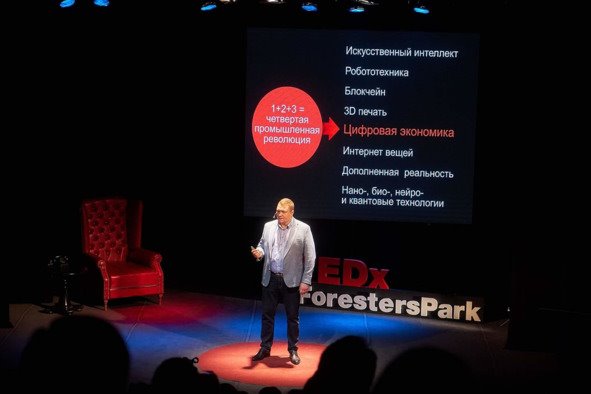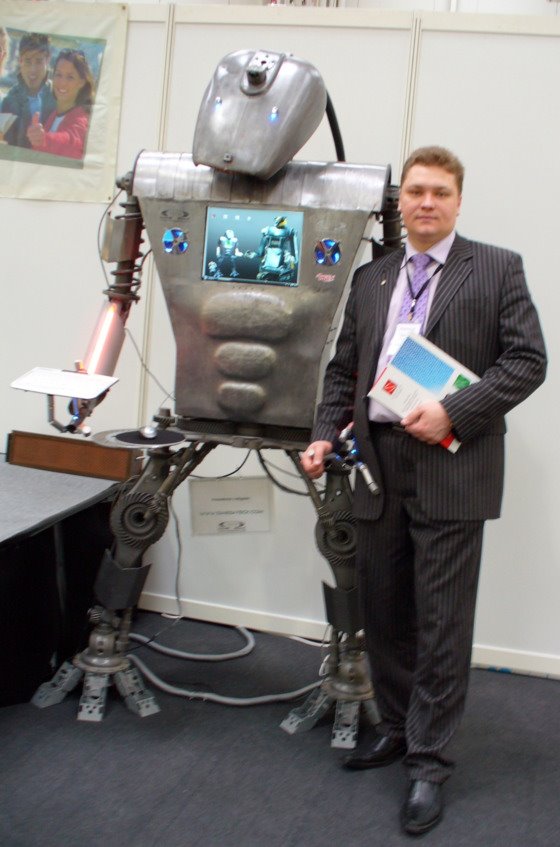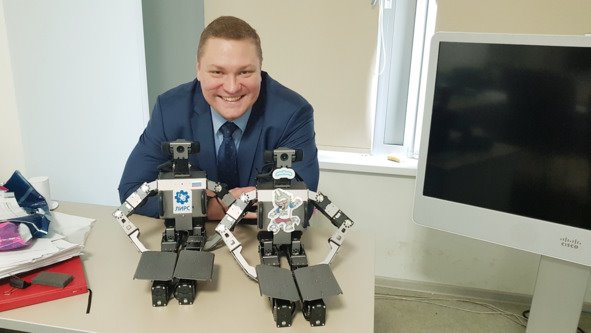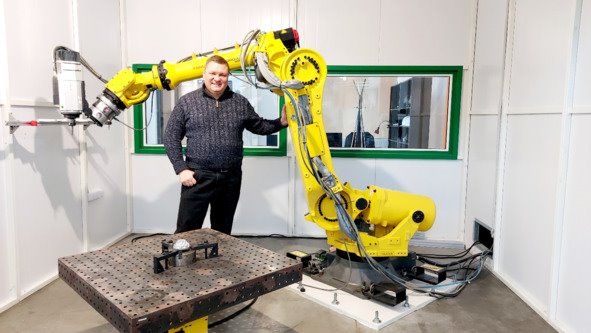
Полная версия:
The fourth industrial revolution glossarium: over 1500 of the hottest terms you will use to create the future

The fourth industrial revolution glossarium: over 1500 of the hottest terms you will use to create the future
Alexander Chesalov
Illustrator Abidal | Dreamstime
Cover designer Alexander Urievich Chesalov
Editor Khadzhimurad Akhmedovich Magomedov
Proofreader Alexandr Khafizovich Yuldashev
© Alexander Chesalov, 2023
© Abidal | Dreamstime, illustrations, 2023
© Alexander Urievich Chesalov, cover design, 2023
ISBN 978-5-0059-8626-9
Created with Ridero smart publishing system
FROM AUTHOR-CREATOR
Alexander Chesalov
Doctor of Engineering Sciences,
Corresponding member of the Russian Academy of Natural Sciences.
Specialist in the field of information technology and artificial intelligence since 1991.
Good afternoon, dear friends and colleagues!
Let me introduce you to my new book, «The Fourth Industrial Revolution Glossarium: over 1500 of the hottest terms you will use to create the future».
This is my new book, which combines the experience of the last five years in compiling concise dictionaries on the topics of the information technology, the artificial intelligence, the digital economy, the digital health, the Internet of things and, of course, my favorite topic – the fourth industrial revolution.
This story began in 2019, when I spoke at the world famous international conference TEDx with the report «The Fourth Industrial Revolution: through hardships to the stars».

TEDx ForestersPark 2019
Today, we are increasingly encountering such terms as: «fourth industrial revolution», «information society», «knowledge society», «digitalization» and «digital economy», «Internet of things» and «industrial Internet of things», «Internet of Value», «digital ecosystem», «robotics» and «artificial intelligence», and many others. And very often we do not understand what it is and cannot, for various reasons, understand the essence of modern «digital» processes that are happening to us and in the world around us.1
I will give a simple example.
In this book, the «global information society» or «digital society of the future» is defined as a new global knowledge society that exists and interacts, and is also closely integrated into a fundamentally and qualitatively new «digital» social, economic and cultural ecosystem in which a free exchange of information and knowledge between people, using artificial intelligence, augmented and virtual reality, which are auxiliary interfaces for the interaction of people and machines, computers, robots, wearable and mobile devices, etc.

Germany. Hanover. International IT Exhibition CeBIT 2007
The global information society is a society of the future also because its development is based on intellect, information and knowledge, which are a catalyst for the emergence and development of new social, economic and including information technologies, which in turn transform both the information society itself, and the reality around us on the principle of a feedback system.
One example of the globalization of the information society and its gradual transformation is the widespread use in all areas of activity around the world of the technologies of the fourth industrial revolution. Robotics and artificial intelligence, new computing technologies and big data, digital platforms and ecosystems, new nano- and biotechnologies, and so on, they all unite all people around the world and are a catalyst for the «digital transformation» of modern society.

Germany. Hanover. International IT Exhibition CeBIT 2012
It is important to note that in the coming decades, the technologies of the fourth industrial revolution will radically change the way we perceive the world around us. They will change approaches to the processing and analysis of information, change the way people interact, change the processes of production of products and services, and, ultimately, form our new value systems. Humanity will have an understanding not only that information and big data are a value, but there will also be an understanding that they will largely determine the development of modern society. It can be said that right now the so-called «critical mass» of knowledge and technologies is being formed, which will «blow up» the world of technology and science, and change our daily life.
For many years I have been interested in robotics and artificial intelligence. Also, I was very interested in the direction of work – consumer robotics, or in simple terms, I was interested in the direction of creating humanoid robots that could help people, including those with disabilities, in their daily lives.

Kazan. Kazan Federal University 2018
In 2007, robots were imperfect. Software for artificial intelligence systems based on machine learning was in its infancy. The intelligent assistants that we now often encounter when interacting with our smartphones have not yet been. And there is no need to talk about humanoid robots.
With the advent of the new millennium, the fourth industrial revolution changed the usual order of things.
Most of the modern terms of the fourth industrial revolution appeared in the period of the second and third industrial revolutions. I talk about this in detail in my book «Digital Transformation».
In an effort to use everything new, you and I must give ourselves an account of the fact that systems created on the basis of new technologies must first of all serve the interests of humanity, must give people more opportunities, more prospects, freedom and control over their own lives. And this is very important, because a person, sooner or later, will entrust the responsibility of managing and providing for his life to the «product» of his creativity, namely robots and artificial intelligence. And if you even look more broadly, at a number of robotic and automated systems controlled and serviced by hundreds of artificial intelligences, and not by humans.
The fourth industrial revolution is capable of generating any form of social, economic and cultural systems. And I would not like to share the opinion of Elon Musk that: «Artificial Intelligence will sooner or later kill all of us» or the opinion of the British physicist Stephen Hawking about the superiority of artificial intelligence over humanity. I share the view of our future offered by Klaus Martin Schwab in his books.

Innopolis. Innopolis University 2021
I would like to believe that you and I will be able to create such systems that will make our society more «humane», prosperous and allow us to increase the duration of our lives, open new opportunities for useful and interesting activities in a stable and harmoniously developing environment.
It is important to understand that the formation of the model of our future with you and the vital activity systems of our society, based on the use of technologies of the fourth industrial revolution, have not yet been implemented by anyone.
We are at the very beginning of the journey.

Moscow. Russian University of Economics named G.V. Plekhanov. V International Scientific Forum «Step into the Future: Artificial Intelligence and Digital Economy. Techno-economics: transformation of platforms 2023
And, therefore, the question is how will our life with you change at the moment when the technologies of the fourth industrial revolution work in full force, what place will we occupy in this world, and most importantly – what role will be assigned to high technologies and results based on these technologies, depends exclusively on you and me!
What kind of book is this?
This is, first of all, an information guide that will help you or any other person, or a specialist from any industry, quickly enough to orientate yourself in the whole variety of new terms and definitions of the fourth industrial revolution.
The book is aimed not only at specialists working in the field of information technologies. The book is written for everyone who is interested in our future with you in the period of digital transformations of the fourth industrial revolution.
Why is the book called a «glossary»?
«Glossarium» in Latin means a dictionary of highly specialized terms.
My first experience in this area was in the compilation of a glossary on artificial intelligence and information technologies, which I published in December 2021. It originally contained only 400 terms. Then, already in 2022, I significantly expanded it to more than 1,000 relevant terms and definitions.2
In 2022, in a team with two co-authors (with whom in 2021 I worked on the development of the Program of the Artificial Intelligence Center of the Bauman Moscow State Technical University), the «Glossary of artificial intelligence: 2,500 terms» was prepared and published3. As it becomes clear from the title of the book, it already contains more than 2,500 terms and is defined in the direction of «artificial intelligence» in Russian and English. The first edition of this book was presented to a wide range of readers at the 35th Moscow International Book Fair in 2022.
In 2022, I completed another work and published the book «Glossary of digital economy: 1500 terms and definitions», which helped me a lot in my daily work with the analysis of a huge amount of different information, when writing and implementing various IT projects.4
In 2023, the book «Glossary on digital healthcare: 2000 terms and definitions» was published in the third year.5
This book, as I said, combines experience from 2019 and was prepared by me for publication from 2021 to 2023. It contains terms and definitions that are widely used around the world. The book combines not only the best of the above books, but also includes terms and definitions from the topic of the Internet of Things and the fourth industrial revolution in general.
I, as the author-creator, do not claim authorship and uniqueness of the prepared text. The main goal of my work is to give you new and relevant information on the fourth industrial revolution, as well as a «tool» that will help you in your daily work.
The book is a personal project of the author and a completely free document for distribution. You are free to use this book however you like, but a link to the text in this book is required.
The book is published in electronic form, and I continue to work on improving and filling this book with new terms and definitions. I would be grateful for any feedback, suggestions and clarifications. Please send them to aleksander.chesalov@yandex.ru.
You can get to know me and my projects in the digital economy, artificial intelligence and IT systems in detail on my personal website chesalov.com.
This book is my gift to you.
Happy reading and productive work!
Yours, Alexander Chesalov.
03/15/2023. First edition. 1659 terms.
The Fourth Industrial Revolution Glossarium: over 1500 of the hotest terms you will use to create future
«A»
A/B testing – involves the testing of two variants in order to determine which one is better. For example, A/B testing can be used to find out which of two webpage options yields a better conversion rate. If it’s assumed that version A has a better conversion rate, it’s used as the basis for a new, slightly different version and then tested again to discover the better performing version6.
Access Control – prevention of unauthorized use of a resource, including the prevention of use of a resource in an unauthorized manner7.
Access history is a record of all activity related to an individual’s My Health Record. Every time My Health Record is accessed, changed or a user removes information from the record, an automatic audit trail is created and can be viewed8.
Access in the context of security, is the privilege or assigned permission to use computer data or resources in some manner. For instance, a user may be allowed read access to a file, but will not be allowed to edit or delete it. Access is also the amount of admittance allowed to any given entity; or, it can simply mean the permission for admittance9.
Access list is a list associated with an individual’s My Health Record that specifies the registered healthcare provider organizations permitted to, or blocked from, accessing an individual’s My Health Record. The access list will show the healthcare provider organizations who have previously accessed the record10.
Access to information – the ability to obtain information and use it.
Access to information constituting a commercial secret – familiarization of certain persons with information constituting a commercial secret, with the consent of its owner or on other legal grounds, provided that this information is kept confidential.
Accessing organization – the healthcare organization that accesses the My Health Record system11.
Accountable care organization (ACO) is an association of hospitals, healthcare providers and insurers in which all parties voluntarily assume financial and medical responsibility for medicare patients12.
Achievement diary – developmental milestones throughout childhood, such as first words spoken or the first day of primary school, can be recorded in the achievement diary by an individual or their authorized representatives, such as a parent. Healthcare provider organizations cannot view these13.
Active and Healthy Ageing is the process of optimizing opportunities related to health, participation and safety in order to improve quality of life14.
Active assisted living (AAL) is concepts, products, services, and systems combining technologies and social environment with the aim of improving the quality of people’s lives15.
Active Learning/Active Learning Strategy – a special case of Semi-Supervised Machine Learning in which a learning agent is able to interactively query an oracle (usually, a human annotator) to obtain labels at new data points. A training approach in which the algorithm chooses some of the data it learns from. Active learning is particularly valuable when labeled examples are scarce or expensive to obtain. Instead of blindly seeking a diverse range of labeled examples, an active learning algorithm selectively seeks the particular range of examples it needs for learning.
Adaptive Design is an alternative to responsive design and relies on creating a separate program design (mobile vs. desktop) for each view. Adaptive design is often referred to as dynamic serving. Responsive Design refers to the planning of an adaptive online service, in which the appearance of the service is designed to be responsive. A responsive online service uses one code from one web address to cater for the various devices a user has (desktop, tablet, smart phone, regular cell phone), but displays the content differently depending on the screen size16,17.
Adaptive system is a system that automatically changes the data of its functioning algorithm and (sometimes) its structure in order to maintain or achieve an optimal state when external conditions change.
Additive manufacturing (AM) or additive layer manufacturing (ALM) is the industrial production name for 3D printing, a computer-controlled process that creates three dimensional objects by depositing materials, usually in layers18.
Additive technologies are technologies for the layer-by-layer creation of three-dimensional objects based on their digital models («twins»), which make it possible to manufacture products of complex geometric shapes and profiles.
Administration portal – an online tool used by the System Operator for administrative actions on individual My Health Records, for example when assisting an individual with an enquiry19.
Advance care document custodian is someone who holds a copy of an individual’s advance care planning document. An individual can add their advance care document custodian’s name and contact details in their My Health Record so that doctors will be able to contact the custodian should the need arise20.
Advance care planning documents is a document that is a type of written statement regarding a person’s wishes for their future medical or healthcare treatment and may formally appoint a substitute decision-maker. Advance care planning documents detail your future medical care preferences. It provides guidance to your family, close friends and medical professionals if you are unable to communicate due to illness or injury. Advance care planning documents (and goals of care documents) can be uploaded to and stored on your My Health Record by a healthcare provider with your consent. Also refer to Goals of Care document21.
Advanced access controls – the access controls that enable a registered individual to set controls on the registered healthcare provider organizations and nominated representatives who may access the individual’s My Health Record or documents within it22.
Agency for healthcare research and quality (AHRQ) is a U.S. government agency that functions as a part of the department of health & human services (HHS) to support research to help improve the quality of health care23.
Aggregate — a total created from smaller units. For instance, the population of a county is an aggregate of the populations of the cities, rural areas, etc., that comprise the county. To total data from smaller units into a large unit24.
Aggregate Data is data that have been aggregated. Contrast with microdata. Also, Aggregated Data – data of several individuals that have been combined to show general trends or values25,26.
Aggregator is a type of software that brings together various types of Web content and provides it in an easily accessible list. Feed aggregators collect things like online articles from newspapers or digital publications, blog postings, videos, podcasts, etc. A feed aggregator is also known as a news aggregator, feed reader, content aggregator or an RSS reader27.
Agile Development is a group of methodologies used in software projects aimed at producing fit-for-purpose software faster and more reactively. Agile development can be understood as the opposite of traditional waterfall software development28.
Agricultural Financial Platform is a center of excellence in agricultural finance in the form of a financing system for agricultural micro-enterprises, which includes practical tools for farmers, agricultural experts, financial practitioners, and knowledge and best practices for policy makers29.
AI acceleration is acceleration of calculations encountered with AI, specialized AI hardware accelerators are allocated for this purpose (see also artificial intelligence accelerator, hardware acceleration). Also, AI acceleration is the acceleration of AI-related computations, for this purpose specialized AI hardware accelerators are used.
AI accelerator is a class of microprocessor or computer system designed as hardware acceleration for artificial intelligence applications, especially artificial neural networks, machine vision, and machine learning. Also, AI accelerator is a specialized chip that improves the speed and efficiency of training and testing neural networks. However, for semiconductor chips, including most AI accelerators, there is a theoretical minimum power consumption limit. Reducing consumption is possible only with the transition to optical neural networks and optical accelerators for them.
AI and machine learning imbues programs and machines with human-like decision-making capabilities. These capabilities become more advanced with machine learning algorithms and refined over time with exposure to larger data sets30.
AI benchmark is an AI benchmark for evaluating the capabilities, efficiency, performance and for comparing ANNs, machine learning (ML) models, architectures and algorithms when solving various AI problems, special benchmarks are created and standardized, initial marks. For example, Benchmarking Graph Neural Networks – benchmarking (benchmarking) of graph neural networks (GNS, GNN) – usually includes installing a specific benchmark, loading initial datasets, testing ANNs, adding a new dataset and repeating iterations.
AI Building and Training Kits is applications and software development kits (SDKs) that abstract platforms, frameworks, analytics libraries, and data analysis appliances, allowing software developers to incorporate AI into new or existing applications.
AI camera – a camera with artificial intelligence, digital cameras of a new generation – allow you to analyze images by recognizing faces, their expression, object contours, textures, gradients, lighting patterns, which is taken into account when processing images; some AI cameras are capable of taking pictures on their own, without human intervention, at moments that the camera finds most interesting, etc.
AI chipset is a chipset for systems with AI, for example, AI chipset industry is an industry of chipsets for systems with AI, AI chipset market is a market for chipsets for systems with AI.
AI chipset market – chipset market for systems with artificial intelligence (AI), see also AI chipset.
AI cloud services are AI model building tools, APIs, and associated middleware that enable you to build/train, deploy, and consume machine learning models that run on a prebuilt infrastructure as cloud services. These services include automated machine learning, machine vision services, and language analysis services.
AI CPU is a central processing unit for AI tasks, synonymous with AI processor.
AI engineer is an AI systems engineer.
AI engineering – transfer of AI technologies from the level of R&D, experiments and prototypes to the engineering and technical level, with the expanded implementation of AI methods and tools in IT systems to solve real production problems of a company, organization. One of the strategic technological trends (trends) that can radically affect the state of the economy, production, finance, the state of the environment and, in general, the quality of life of a person and humanity.
AI hardware (also AI-enabled hardware) is infrastructure hardware or artificial intelligence system, AI infrastructure.
AI industry – for example, commercial AI industry – commercial AI industry, commercial sector of the AI industry.
AI industry trends are promising directions for the development of the AI industry.
AI infrastructure (also AI-defined infrastructure, AI-enabled Infrastructure) is the infrastructure of an artificial intelligence system, AI infrastructure, AI infrastructure, for example, AI infrastructure research – research in the field of AI infrastructures (see also AI, AI hardware).



